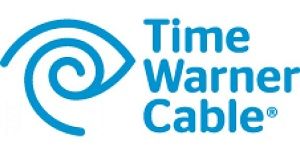Cable Show 2013: TWC Tests Cloud UI in Syracuse, with NYC, L.A. on Tap for Fall

Washington -- Time Warner Cable is testing a new cloud-based navigator for advanced set-tops and gateways with employees in Syracuse, N.Y., and will expand trials to New York City and Los Angeles this fall ahead of a full scale deployment in 2014, executives said here Tuesday.
TWC senior vice president of web services and technology Matthew Zelesko and group vice president of video Alix Cottrell presented those plans, along with an early glance at the MSO's new, personalized guide, at a private briefing held here on the show floor. Initial deployments of the new UI are expected to begin later this year, they said.
By putting the smarts of the guide in the cloud and establishing a strong Web-like services layer, TWC is looking to accelerate product development and add features more rapidly than it has historically been able to do with classic, set-top-resident UIs. Zelesko said the interactive platform will allow the MSO to add new sets of features every two to three weeks and enable TWC's platform to also support third-party applications.
Importantly, the approach will give TWC an opportunity to provide a consistent, almost unified look and feel across devices, whether they are MSO-supplied set-tops and gateways or devices consumers buy at retail.
TWC is developing the flagship cloud UI to run on a new class of hybrid QAM/IP gateways and IP-only HD client devices. The centerpiece will be a six-tuner gateway with 1 terabyte of storage (enough for 150 hours of HD video) that can transcode QAM video into IP streams that can be shared over the home’s coax network with a new type of IP set-top client. That client box will help TWC “future-proof” the MSO's IP video transition, and will eventually be capable of accessing the TWC TV app, which supports both VOD and live TV over IP, Zelesko said.
The MSO has also developed similar versions of the guide that are being stitched into apps that will run on Roku boxes, Samsung-made connected TVs and other IP-connected devices that are on the MSO’s roadmap.
An upgraded version of the TWC TV app for the Roku, expected to become available in four to six weeks, will add a mini-guide feature offered on iOS devices today, as well as a new filtering component that will show only recently watched TV channels programs in specific categories such as entertainment, kid or sports.
Multichannel Newsletter
The smarter way to stay on top of the multichannel video marketplace. Sign up below.
The MSO also announced Tuesday that it will offer the TWC TV app on Samsung smart TVs without the need for a separate set-top, starting with 2012 models and, soon, 2013 models. The initial version, to launch this summer, will support only VOD content (about 5,000 titles from nearly 100 networks at the start, according to this TWC blog post). TWC's app for Samsung TVs will add live TV streaming by the end of 2013, Cottrell said.
Sharing some of the traits seen on the new cloud-based X2 user interface that Comcast is preparing to launch this fall, TWC’s new UI will feature a revamped, menu structure, fancy jacket art, personalized user recommendations, and a search function that unifies what the customer can get on live TV, via the MSO’s VOD platform, and what’s stored on the local DVR.
Among some of the bells and whistles includes an icon that identifies shows with Start Over rights and customized pages that give access to a viewer’s favorites. The guide also adds a “series play” feature that will pull up a page of likely actions that a user would take at the end of a DVR recording (deleting the the episode, for instance) an on-demand session (auto-starting the next episode in a series).
TWC’s IP platform for VOD and live TV streaming is being fed by the MSO’s own content delivery network (CDN) based in the Denver area. It’s also building a CDN in Charlotte, N.C., that will provide full backup. TWC could eventually use the Charlotte CDN to serve customers on the East coast, and tap the Denver-based CDN to serve systems in the West, Zelesko said. TWC's CDNs support the Apple HTTP Live Streaming and Microsoft Smooth Streaming adaptive bit rate formats.
